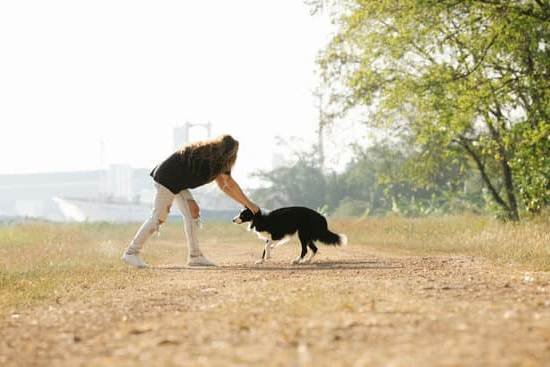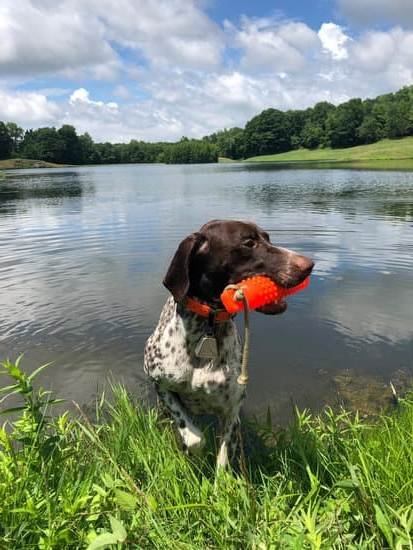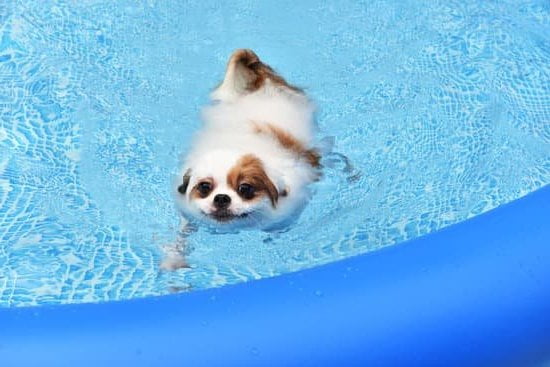Are you looking to learn how to train a dog on a slip lead? Slip lead training can be an effective and gentle way to teach your canine companion proper leash etiquette. In this article, we will guide you through the basics of slip lead dog training, from choosing the right lead to troubleshooting common challenges along the way.
The first step in successful slip lead training is understanding the fundamentals of this training method. Whether you’re working with a young puppy or an older dog, using a slip lead requires patience, consistency, and positive reinforcement. We’ll delve into the key principles of slip lead training and provide tips for building a strong foundation with your furry friend.
Once you grasp the basics, it’s important to select the right slip lead for your dog. Finding a comfortable and well-fitting lead is essential for successful training. We’ll discuss how to choose the best slip lead for your canine companion and provide guidance on properly adjusting the lead for optimal effectiveness during training sessions.
Choosing the Right Slip Lead
When it comes to slip lead dog training, one of the most important factors to consider is choosing the right slip lead for your dog. A slip lead should fit comfortably and securely around your dog’s neck, allowing you to have control without causing discomfort. Here are some factors to consider when choosing the right slip lead for your dog:
- Size: Make sure to select a slip lead that is the appropriate size for your dog. It should fit snugly around their neck without being too tight or too loose.
- Material: Slip leads come in various materials such as nylon, leather, or rope. Consider which material would be most comfortable for your dog and durable enough to withstand training sessions.
- Hardware: The hardware of the slip lead, such as the clasp and ring, should be sturdy and reliable. This will ensure that the lead stays secure during training.
Once you have selected the right slip lead for your dog, it’s essential to properly adjust it for a comfortable and effective fit.
- Start by placing the looped end of the slip lead over your dog’s head, allowing it to rest at the base of their neck.
- Adjust the sliding metal piece on the lead so that it fits snugly but not too tight around your dog’s neck.
Properly fitting the slip lead is crucial for successful training sessions and will help prevent any discomfort or injury to your dog.
Overall, choosing the right slip lead is an important step in ensuring a positive training experience for both you and your dog. By considering factors such as size, material, and hardware, you can find a slip lead that fits comfortably and securely on your dog. Properly adjusting the lead will also contribute to successful training sessions and set a strong foundation for teaching your dog how to respond to pressure and walk politely on a slip lead.
Adjusting the Slip Lead
The slip lead is a versatile and effective tool for training your dog, but one of the most important aspects of using it correctly is ensuring that it is properly fitted. Adjusting the slip lead to the right size for your dog is crucial for effective training and to prevent any discomfort or injury. In this section, we will discuss the importance of adjusting the slip lead and provide a step-by-step guide on how to do so.
Properly fitting the slip lead starts with choosing the right size for your dog. The lead should be snug, but not too tight, around your dog’s neck.
It should also be adjusted in a way that allows for quick release when needed, while still maintaining control when walking or training. One common mistake is having the lead too loose, which can compromise the effectiveness of the training and potentially put your dog at risk if they were to escape from it.
To adjust the slip lead for training, start by placing it over your dog’s head and allowing it to rest comfortably around their neck. Then, gently pull on the lead to tighten it enough so that there is no slack when engaged, but without causing any discomfort to your dog.
It’s essential to monitor your dog’s reaction during this process and make sure they are not showing signs of distress or discomfort. When properly adjusted, your slip lead should allow you to communicate with your dog effectively while providing them with comfort and security.
Once you have properly adjusted the slip lead, it’s important to practice using gentle pressure as a means of communication with your dog during training sessions. By learning how to train a dog on a slip lead using appropriate pressure and release techniques, you can effectively teach them how to respond appropriately without causing harm or discomfort. This method can help build trust between you and your dog while creating a positive learning experience for both of you.
Getting Started
Training a dog on a slip lead can be an effective way to teach them to respond to gentle pressure and learn proper leash manners. Here are some steps to get started on teaching your dog to respond to pressure using a slip lead:
1. Introducing the Slip Lead: Start by introducing the slip lead to your dog in a calm, relaxed environment. Let them sniff and investigate the lead so they can become familiar with it before you begin training.
2. Applying Gentle Pressure: Once your dog is comfortable with the slip lead, gently apply pressure by pulling on the lead and releasing it immediately. This will help your dog understand that when they feel pressure, they should respond accordingly without causing discomfort.
3. Using Positive Reinforcement: Whenever your dog responds appropriately to the pressure, reward them with treats or praise. This will help reinforce their understanding of how to respond when they feel gentle pressure on the slip lead.
4. Practicing Consistently: Consistency is key when training your dog on a slip lead. Practice regularly in short sessions, gradually increasing the duration as your dog becomes more comfortable and responsive.
By following these steps and using positive reinforcement, you can effectively train your dog to respond to gentle pressure on a slip lead, setting the foundation for successful leash walking and overall obedience.
Leash Walking
Introduction
Leash walking is an essential skill for any dog, and training your dog to walk politely on a slip lead requires patience and consistency. This section will guide you through the process of teaching your dog to walk calmly and obediently while using a slip lead.
Getting Started
The first step in training your dog to walk on a slip lead is to ensure that the lead is properly adjusted for a secure fit. It should be snug enough that it won’t slide off, but not too tight that it causes discomfort. Introduce the slip lead to your dog gradually, allowing them to sniff and become familiar with it before putting it on.
When starting the leash walking training, begin in a quiet and familiar environment where there are minimal distractions. Hold the lead in such a way that there is no unnecessary tension or pressure, as this can cause anxiety in your dog.
Teaching Proper Walking Behavior
As you start walking with your dog on the slip lead, avoid pulling or jerking the lead. Instead, gently apply pressure when necessary and release it once your dog responds by moving closer to you. Reward your dog with treats or verbal praise when they walk calmly beside you without pulling on the lead. Practice this consistently during short walks at first, gradually increasing the duration as your dog gets more comfortable with the slip lead.
By following these steps and being patient with your pet, you can train your dog to walk politely on a slip lead, creating enjoyable walks for both of you. Remember that every dog learns at their own pace, so stay consistent and positive in your approach.
Common Mistakes and How to Avoid Them
Incorrect Fit
One of the most common mistakes when training a dog on a slip lead is not having the lead properly fitted. It’s important to ensure that the lead is snug, but not too tight, around your dog’s neck. If it’s too loose, your dog may be able to slip out of it, defeating the purpose of using a slip lead for training.
On the other hand, if it’s too tight, it can cause discomfort and even injury to your dog. Take the time to adjust the fit of the slip lead and regularly check it as your dog grows or changes weight.
Inconsistent Pressure
Another mistake that many dog owners make when training their dogs on a slip lead is using inconsistent pressure. It’s important to apply steady, gentle pressure on the lead to communicate with your dog effectively. Jerking or pulling too hard on the lead can cause discomfort and confusion for your dog, making training less effective. Remember to keep a consistent level of pressure as you guide your dog during walks or obedience training.
Lack of Patience
Many pet owners underestimate how challenging it can be to train a dog on a slip lead and become frustrated when their furry friend doesn’t respond as quickly as they’d like. However, lack of patience can hinder progress in training and create stress for both you and your dog.
Take the time to understand that learning new behaviors takes time and consistency on your part. Positive reinforcement and encouragement are crucial in slip lead training, so be patient with your pet and celebrate every small achievement along the way.
By avoiding these common mistakes in slip lead training, you can set yourself up for success in teaching your dog polite leash manners and obedience skills by using this effective tool. With patience, practice, and proper technique, you will build a strong bond with your pet while helping them become well-behaved companions during walks and outings.
Building Confidence
Training a dog on a slip lead can be a challenging but rewarding experience. One of the key aspects of slip lead training is helping your dog build confidence while wearing the lead. This is important because some dogs may feel anxious or uncomfortable when first introduced to a slip lead.
To help your dog adjust to the slip lead, it’s essential to take things slow and gradually introduce the lead in a positive manner. Start by allowing your dog to sniff the slip lead and become familiar with it before you even attempt to put it on them. You can also try using treats or toys to create a positive association with the lead, rewarding your dog for showing curiosity or calm behavior around it.
Once your dog is comfortable with the sight and smell of the slip lead, gently introduce it around their neck without applying any pressure. Allow them to get used to the feeling of having the lead on before you begin any training exercises. This will help prevent your dog from feeling overwhelmed and anxious about wearing the lead, leading to a more successful training experience down the line.
As you start implementing training exercises with the slip lead, continue to provide positive reinforcement in the form of treats, praise, and encouragement. Building confidence takes time and patience, so be sure to celebrate even small victories as your dog becomes more comfortable with wearing and walking on the slip lead.
| Helping Your Dog Adjust | Building Confidence |
|---|---|
| Introduce slip lead gradually | Start by allowing your dog to sniff and become familiar with it |
| Use treats or toys for positive association | Reward calm behavior around the slip lead |
| Gently introduce around neck without pressure | Celebrate small victories in training exercises |
Troubleshooting
Training a dog on a slip lead can be an effective method, but it is not without its challenges. It’s important to address any obstacles that may arise during the training process in order to ensure success. In this section, we will discuss some common issues that may occur when training a dog on a slip lead and provide solutions for addressing them.
One common challenge when using a slip lead for dog training is resistance from the dog. Some dogs may initially resist wearing the slip lead, especially if they are used to wearing a traditional collar or harness. To address this, it’s important to introduce the slip lead gradually and with positive reinforcement.
Start by allowing your dog to become familiar with the slip lead by letting them wear it around the house for short periods of time before attempting any training exercises. Use treats and praise to create a positive association with the slip lead.
Another issue that many dog owners encounter when using a slip lead is pulling and lunging behavior. Dogs who are not properly trained on a slip lead may exhibit pulling or lunging behavior, which can be frustrating for both the owner and the dog. To address this issue, focus on teaching your dog proper leash manners by using gentle pressure and positive reinforcement.
When your dog pulls or lunges, gently apply pressure to the lead and immediately release it as soon as your dog responds by moving back towards you. Repeat this process consistently until your dog learns to walk politely on the slip lead without pulling.
| Common Issue | Solution |
|---|---|
| Resistance from the Dog | Introduce the slip lead gradually with positive reinforcement; use treats and praise |
| Pulling and Lunging Behavior | Teach proper leash manners using gentle pressure and positive reinforcement; apply pressure when your dog pulls or lunges and release it when they respond appropriately |
Conclusion
In conclusion, slip lead dog training can be a highly effective method for teaching your dog to walk politely and respond to pressure. By choosing the right slip lead and adjusting it properly, you can set your dog up for success in their training. While there may be challenges and obstacles along the way, with patience and consistency, you can help your dog build confidence and adjust to using a slip lead.
It is important to remember that slip lead training is not without its difficulties, but by being aware of common mistakes and how to avoid them, you can make the training process smoother for both you and your dog. Additionally, troubleshooting any challenges that arise along the way will be crucial in ensuring that your dog continues to progress in their training.
Ultimately, celebrating the progress and success in slip lead dog training is important. Each small achievement should be acknowledged and reinforced, as this will motivate your dog to continue learning and improving. With the right techniques and dedication, you can successfully train your dog on a slip lead, leading to enjoyable walks for both you and your furry companion.

Welcome to the blog! I am a professional dog trainer and have been working with dogs for many years. In this blog, I will be discussing various topics related to dog training, including tips, tricks, and advice. I hope you find this information helpful and informative. Thanks for reading!





